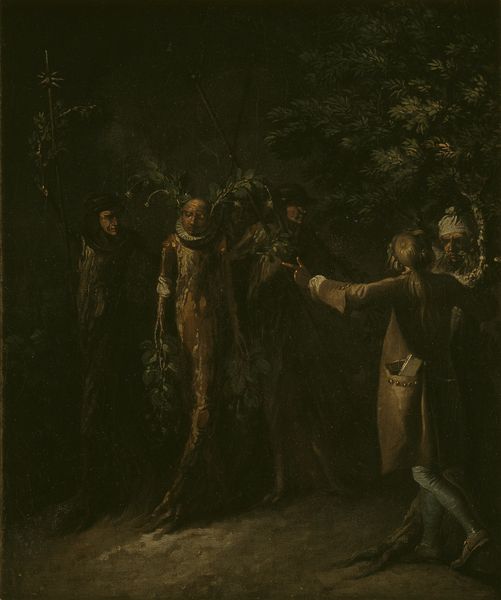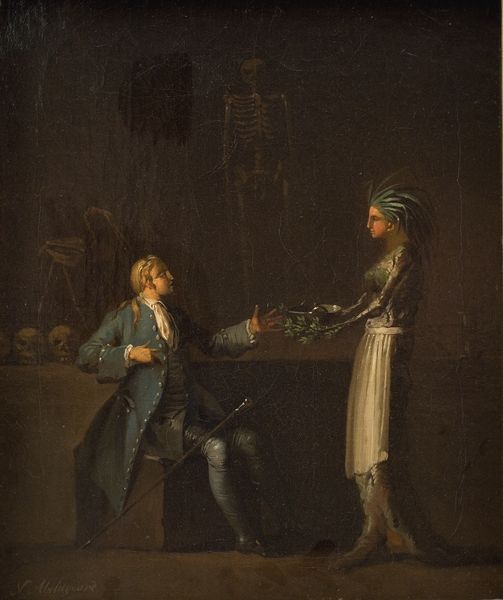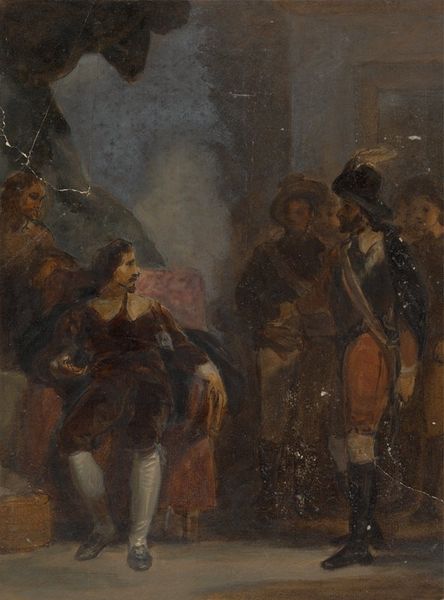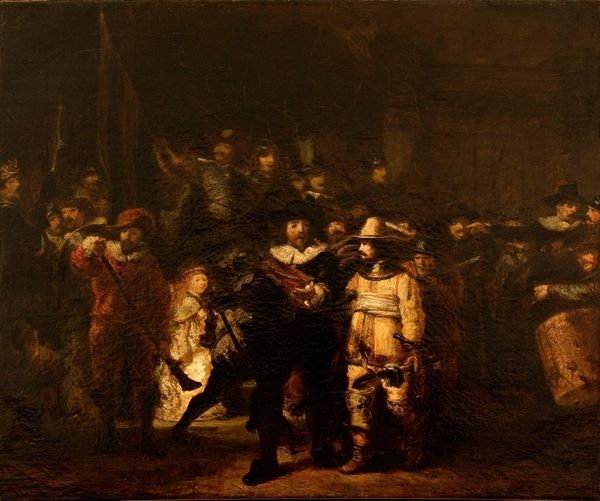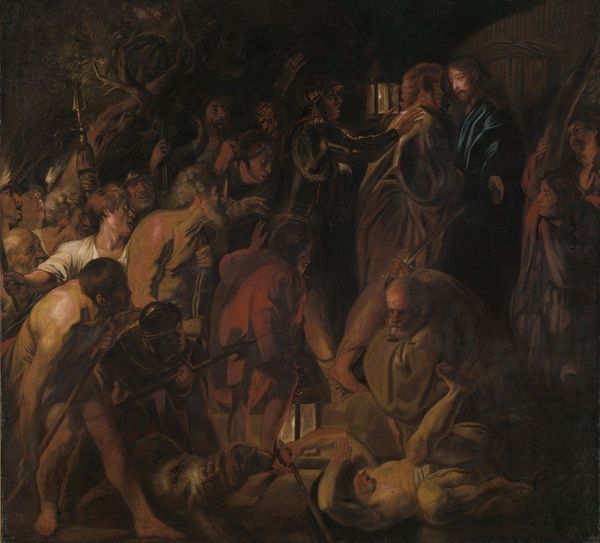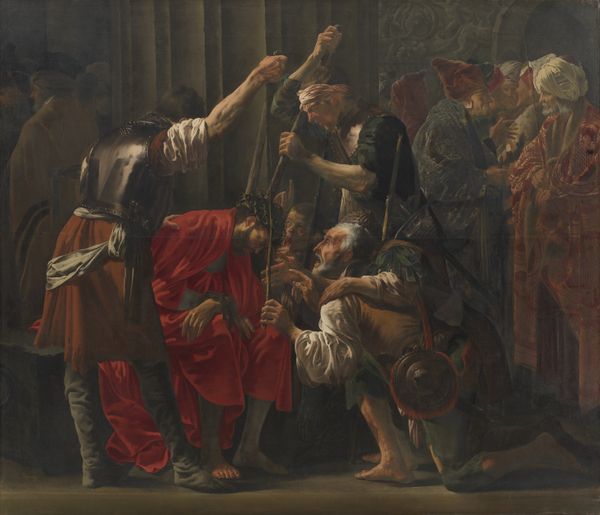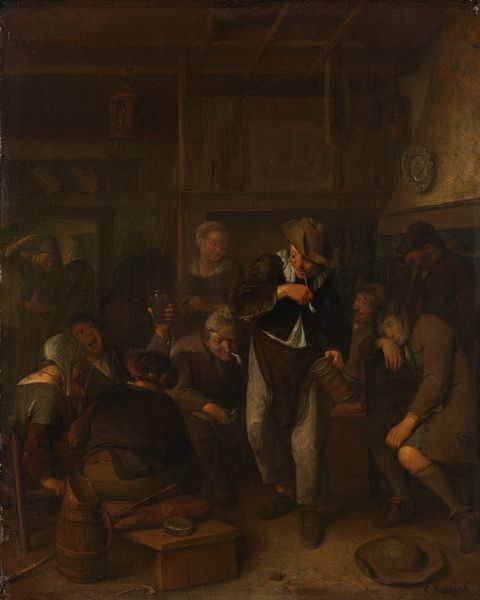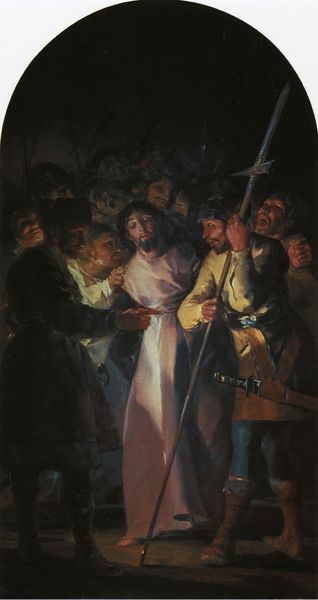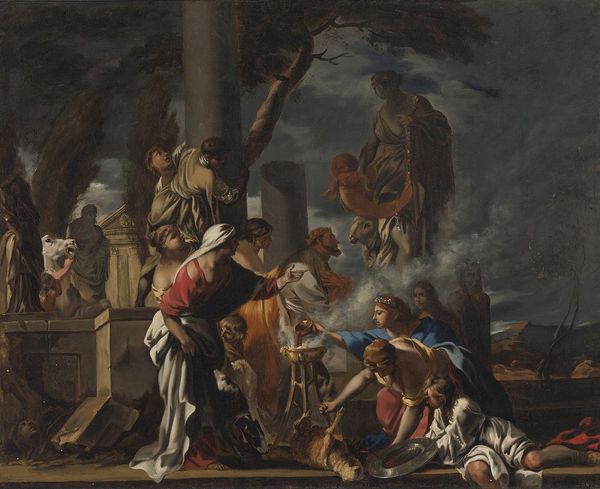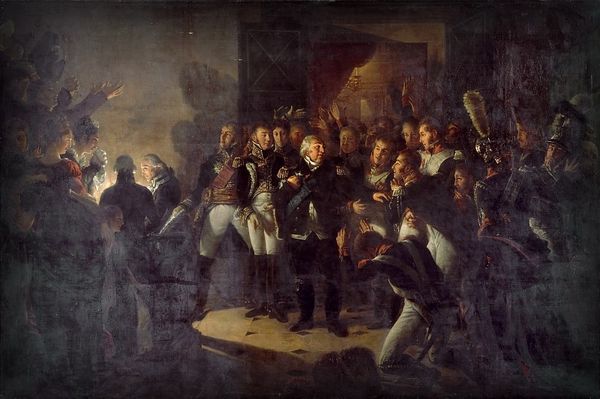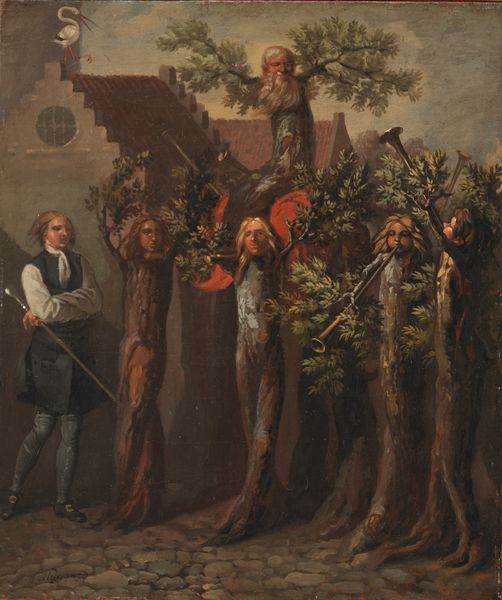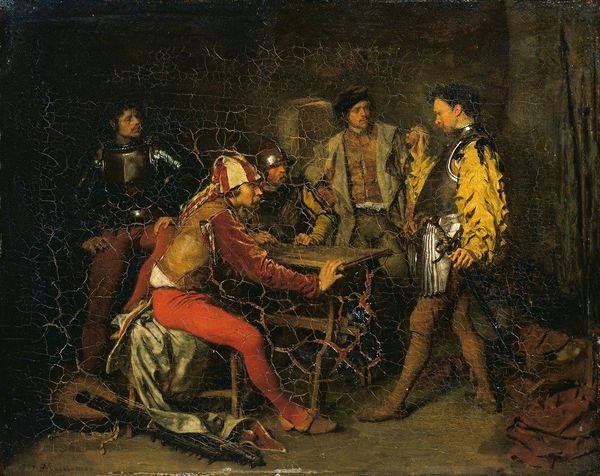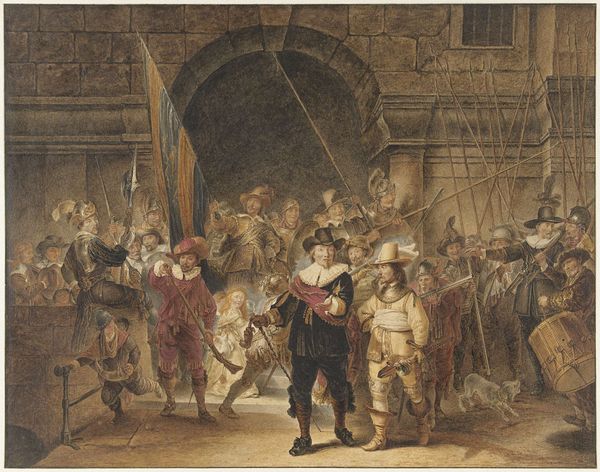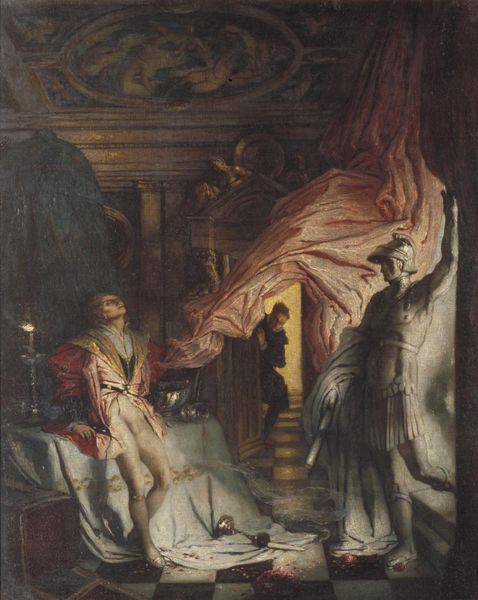
The Potuans are Surprised to see Niels Klim Genuflect in front of the Wise Prince. 1785 - 1787
0:00
0:00
painting, oil-paint
#
neoclacissism
#
narrative-art
#
painting
#
oil-paint
#
figuration
#
history-painting
Dimensions: 42 cm (height) x 35.5 cm (width) (Netto), 51 cm (height) x 44.4 cm (width) x 3.8 cm (depth) (Brutto)
Nicolai Abildgaard painted this scene, "The Potuans are Surprised to see Niels Klim Genuflect in front of the Wise Prince," using oil on canvas. It depicts Niels Klim kneeling before the prince, a gesture loaded with historical weight. The act of genuflection—bending the knee—echoes through time, from ancient rituals of reverence to displays of fealty before monarchs. This posture is not merely physical; it is a symbolic lowering of oneself before power, an acknowledgment of authority. Think of the medieval knight kneeling before his liege, or the supplicant before a deity, both embodying submission and respect. Yet, the meaning shifts. In some cultures, kneeling signifies humility and piety before the divine, whereas, in others, it can denote subjugation and loss of autonomy. This fluidity reveals our subconscious grappling with power dynamics, played out through codified gestures. Observe how such actions tap into primal emotions, engaging us on a visceral level, triggering a collective memory of past triumphs and oppressions. The Prince is made of tree, in which the divine in nature is celebrated. Thus, the symbol of kneeling resurfaces, transformed by context, yet still resonating with its core—a dance between power, submission, and the ever-evolving human spirit.
Comments
No comments
Be the first to comment and join the conversation on the ultimate creative platform.
